
Penny and Matt preparing a great dinner in Penny’s apartment, Brewery Square,Dorchester. Matt was over from Holland for a few days. I had two, but we packed lots in.
Our first walk was to Maiden Castle, an ancient hill site – biggest of its kind in G B. The weather was very blustery up top, but not cold.
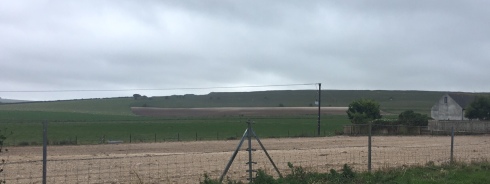
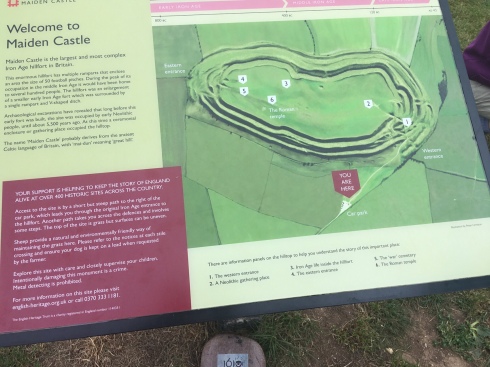
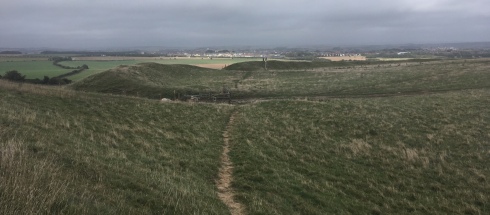
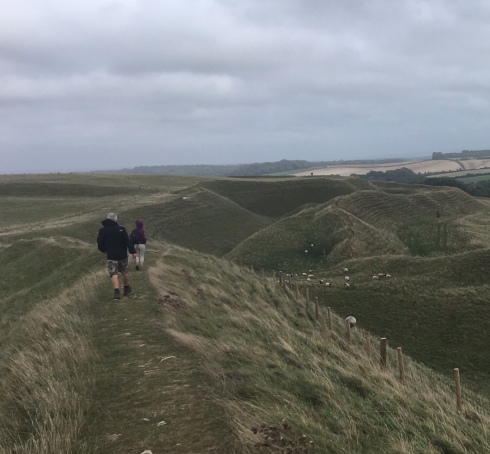

On returning, via the very impressive Queen’s Avenue, we called in at another ancient site,adjacent to the town – the Maumbury rings – it has a chequered history for such a compact, little site.
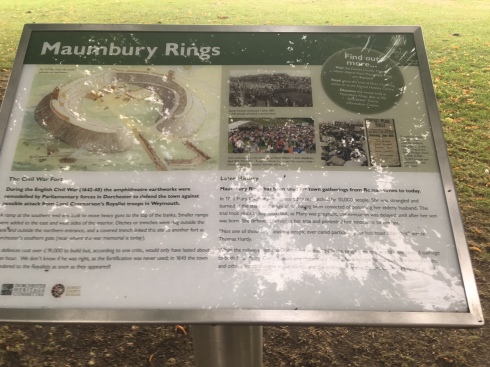
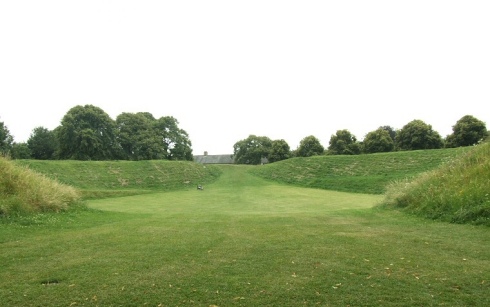
That evening we visited a couple of excellent pubs, including the Convivial Rabbit , where all the drought beers and cider are on tap.
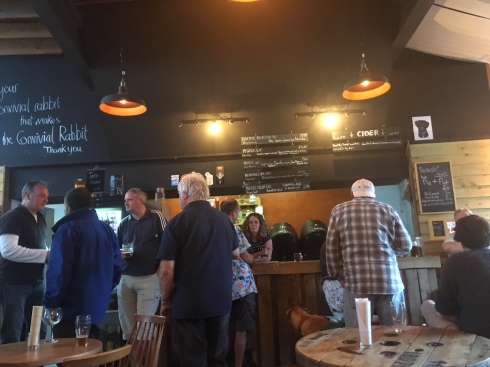
Next day, began with a walk around the weekly Wednesday market – just across the road from us and what a feast for the eyes – for once not dominated by textiles, instead a variety of local produce and interesting brick a brac.

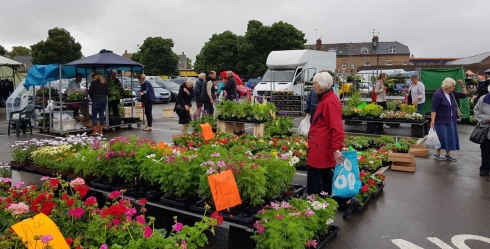
Then after coffee in the Shire Hall, seat of the old county court – a place I intend to visit with its history involving such famous events as the Tolpuddle Martyrs and the grim Judge Jefferson – we walked in to Hardy Country.

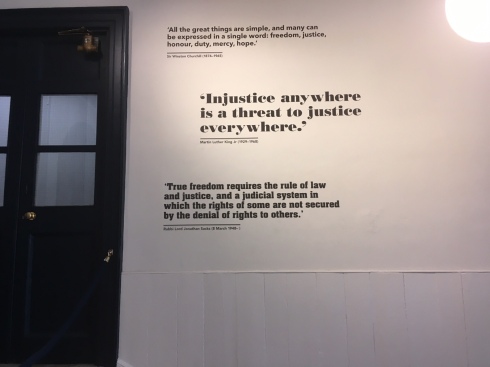
Dorchester has many links with Hardy, The Mayor of Casterbridge for one. We walked along the Mill stream, then crossing by the River Frome, we passed through the water meadows. After what seemed longer than 2 1/2 miles and much Blackberry foraging, we came to Thomas Harry’s Cottage, bequeathed by his sister to the National Trust.
I must confess to not having read any Hardy since my schooldays, but after this visit my interest has been rekindled. The setting of the cottage, with the surrounding woodlands is memorable and yet simple, like the lives his family led there and a habitat to which he returned time after time, despite fame and fortune.
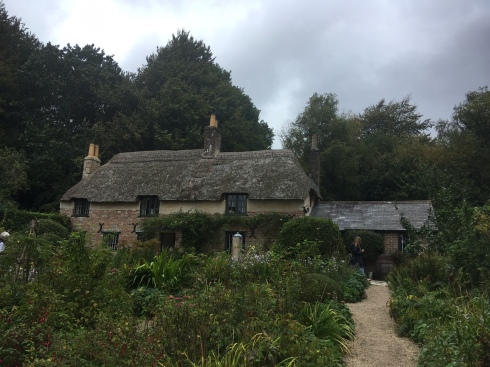
The gardens are maintained, too, pretty much as he knew them. The size of the cottage belies how small the rooms are and all as was. I was very taken by his simple writing desk, a gift from his mother.
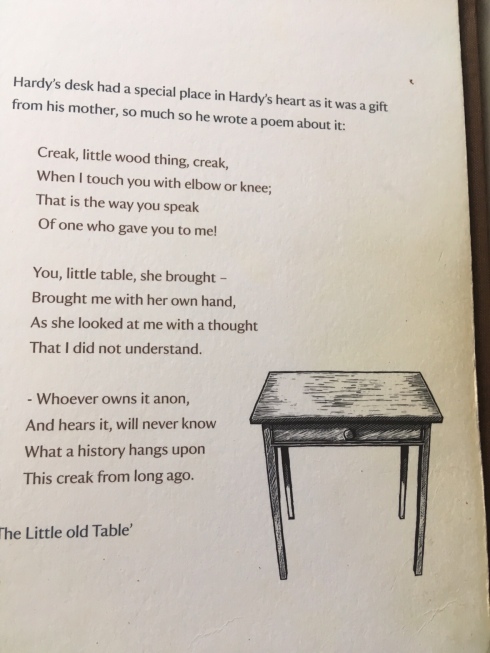
The bedroom was set for dressing and a recipe book in the kitchen reminded us of the Victorian era and its class expectations.
Apparently Harry’s eldest memory was when he was two years old, awakening in his cot to find a snake cosily asleep on his chest.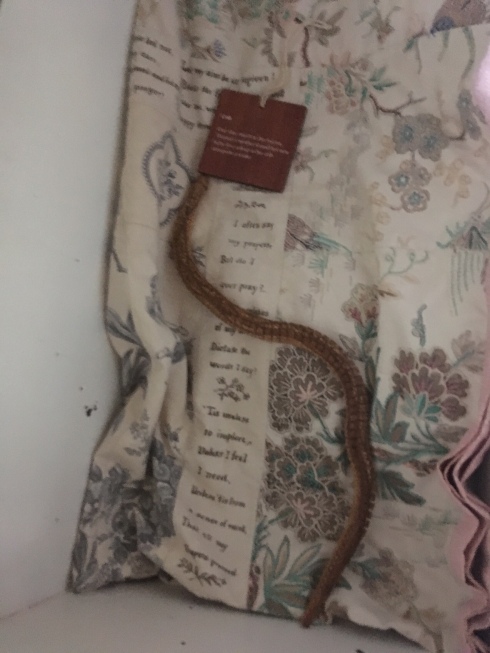

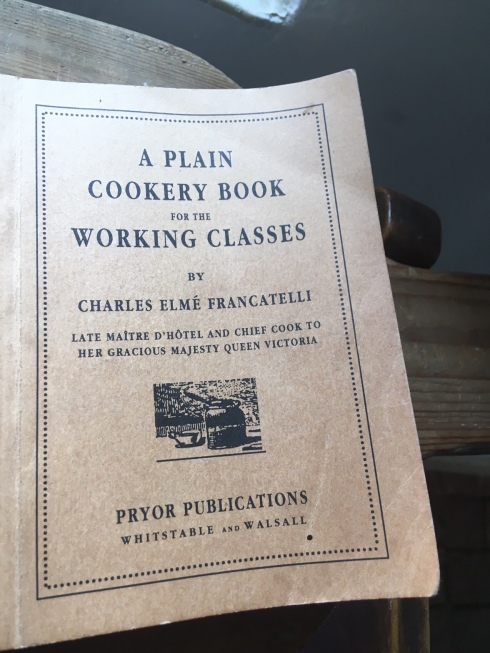
The plainness and practicality of every room was evident – the only ” modern” facilities being the dirt water closet and the well. We were encouraged to draw some water from the well, but nobody was keen on the closet.
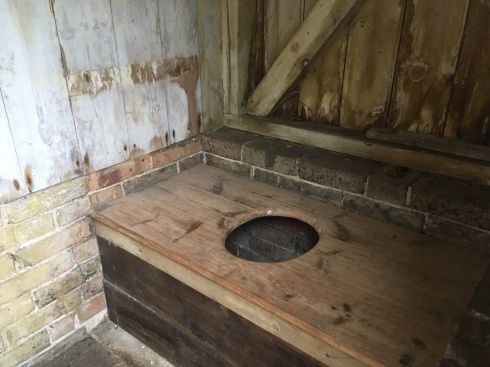
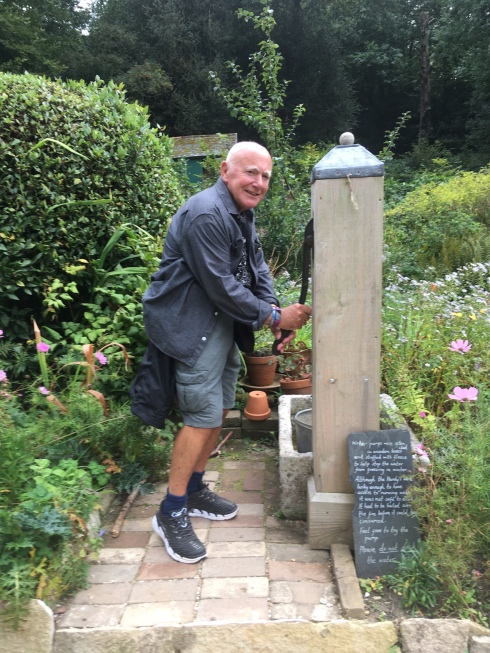
Adjacent to the garden was a shed which housed the cider press, a drink as popular then as now.

The peacefulness of this place – no surfaced roads nearby – was enticing and we reluctantly left the garden to visit another place, literally, close to his heart.

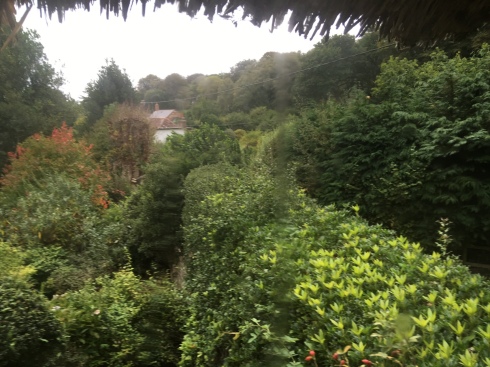
 A 10 minute walk across the fields brought us to where Thomas Hardy’s heart is buried in St. Michael’s churchyard, Stinsford. (Stinsford appears in his novels and poems under the fictional name of Mellstock.) … However, after his death, the authorities at Westminster Abbey suggested he be buried in ‘Poets’ Corner’.
A 10 minute walk across the fields brought us to where Thomas Hardy’s heart is buried in St. Michael’s churchyard, Stinsford. (Stinsford appears in his novels and poems under the fictional name of Mellstock.) … However, after his death, the authorities at Westminster Abbey suggested he be buried in ‘Poets’ Corner’.
An ancient site, the present building underwent considerable change over the centuries, but it remains as Hardy knew it.
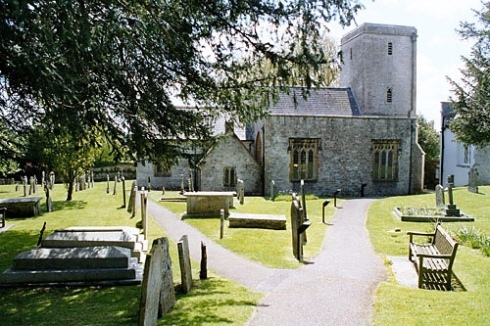
Hardy’s approach to religion was ambivalent. He loved the Bible and knew many passages by heart and also fondly remembered the choirs. But he loved the setting and the place this church had in his family’s life. He was christened there, too.
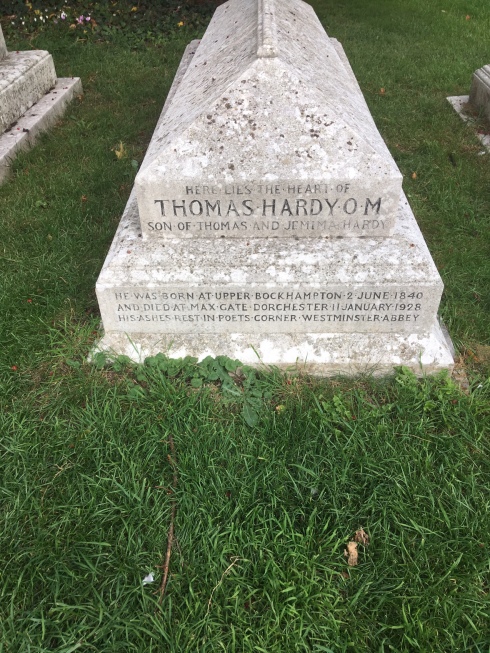
 In 1930, a stained glass window was placed as a memorial to him, with his favourite quotation from 1 Kings 19 enscribed within it.
In 1930, a stained glass window was placed as a memorial to him, with his favourite quotation from 1 Kings 19 enscribed within it.
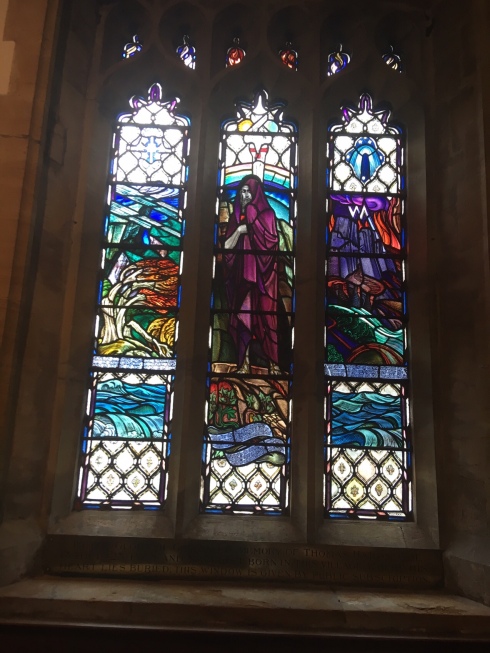 The call of the pulpit was irresistible and I had to give a brief sermon.
The call of the pulpit was irresistible and I had to give a brief sermon.
 A memorable visit and it has enthused me to read some autobiography of him – his relationships were complex, as this extract shows.
A memorable visit and it has enthused me to read some autobiography of him – his relationships were complex, as this extract shows.
 And which novel to begin with? I think it has to be ” Under the Greenward Tree” as its characters and setting closely recall the two settings visited today.
And which novel to begin with? I think it has to be ” Under the Greenward Tree” as its characters and setting closely recall the two settings visited today.
“If we be doomed to marry, we marry; if we be doomed to remain single we do.” “To dwellers in a wood, almost every species of tree has its voice as well as its feature.” “There’s a friendly tie of some sort between music and eating.”
